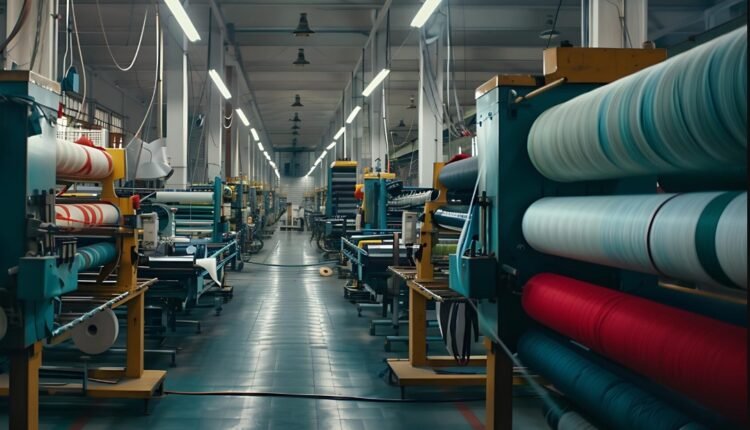The global textile industry, a cornerstone of economic growth and innovation, relies heavily on textile auxiliaries—chemicals used to enhance and optimize the manufacturing process of textiles. These auxiliary agents facilitate crucial steps like pre-treatment, dyeing, printing, and finishing, ensuring that fabrics meet the highest standards of quality and performance. Identifying the Largest Textile auxiliary manufacturer of textile auxiliaries offers a lens into an influential segment of the industry that significantly impacts both the fashion and technical fabric markets.
Understanding Textile Auxiliaries and Their Importance
Textile auxiliaries are indispensable in the textile production pipeline. They include a range of chemical products that assist in processing fibers, yarns, and finished textiles to achieve desired properties such as enhanced color, softness, strength, and resistance to environmental factors like water or heat. The major categories include:
- Pre-treatment auxiliaries: Used to prepare textiles for subsequent processing (e.g., desizing agents and scouring agents).
- Dyeing auxiliaries: Aid in the dyeing process to ensure consistent color uptake.
- Finishing agents: Enhance the final product’s qualities, such as softness, wrinkle resistance, and water repellence.
- Printing auxiliaries: Help maintain sharp and vibrant designs during printing.
Who Is the Largest Textile Auxiliary Manufacturer?
The leading name in textile auxiliary manufacturing varies based on geographic focus and the breadth of product range. However, Archroma, Huntsman Corporation, and CHT Group have long stood as the most influential players in this market.
1. Archroma
Archroma, headquartered in Reinach, Switzerland, is a global powerhouse in sustainable specialty chemicals for the textile and paper industries. Formed after the divestiture of Clariant’s textile, paper, and emulsions businesses, Archroma has built a reputation for innovation and eco-friendly solutions.
Key Highlights:
- Sustainability: Archroma is known for its eco-advanced textile auxiliaries, reducing water and energy consumption.
- Product Range: Offers comprehensive solutions, including pre-treatment, dyeing, and finishing auxiliaries.
- Market Presence: Strong foothold in Europe, Asia, and the Americas, making it a global leader.
2. Huntsman Corporation
An American multinational with roots in specialty chemicals, Huntsman Textile Effects is a branch dedicated to high-quality textile auxiliary products. With a history stretching back to the 1970s, Huntsman has long been associated with groundbreaking technological advancements in the textile industry.
Key Highlights:
- Technological Innovation: Introduced unique dyeing and printing agents that boost efficiency and reduce waste.
- Global Reach: Extensive operations in Asia-Pacific, Europe, and the Americas.
- Eco-friendly Initiatives: Actively invests in creating sustainable products, aligning with environmental regulations and consumer demand for greener textiles.
3. CHT Group
Germany-based CHT Group is another prominent name in textile auxiliaries, known for providing innovative solutions across multiple sectors including textiles, construction, and personal care. Established in 1953, the company has expanded its reach globally, delivering high-performance chemicals that cater to modern textile manufacturing needs.
Key Highlights:
- Product Versatility: Offers a wide array of products, from enzyme-based pre-treatment agents to multifunctional finishing auxiliaries.
- Sustainability Focus: Champions sustainable chemistry, minimizing environmental impact without compromising product efficiency.
- Research and Development: Strong emphasis on R&D ensures cutting-edge solutions that keep pace with industry trends.
What Sets These Leaders Apart?
Technological Leadership and R&D: The largest manufacturers invest heavily in research and development to create innovative products that keep up with emerging trends like smart textiles, which include fabrics with embedded sensors and properties for specialized uses.
Sustainability Initiatives: As environmental concerns grow, industry leaders like Archroma, Huntsman, and CHT are at the forefront of developing eco-friendly auxiliaries. These innovations reduce the environmental footprint of textile manufacturing and address stringent international regulations.
Customer-Centric Approach: Leading companies prioritize customer needs by providing tailor-made solutions and technical support to optimize production processes for their clients. This adaptability ensures that their products fit a variety of textile manufacturing setups, from large-scale operations to specialized boutique productions.
The Future of Textile Auxiliaries
The demand for sustainable and efficient textile production is expected to increase as consumer awareness grows and regulations tighten. The global textile auxiliary market is projected to expand, fueled by rising demand for high-performance fabrics in sectors like fashion, sportswear, and technical textiles.
Future growth for leading manufacturers will likely depend on their ability to innovate with eco-friendly products and strengthen partnerships within the textile supply chain. The integration of AI and advanced data analytics may also enhance product efficiency, allowing manufacturers to offer even more refined and customized solutions.
Conclusion
In conclusion, companies like Archroma, Huntsman Corporation, and CHT Group are reshaping the landscape of textile auxiliaries through their commitment to innovation, sustainability, and customer-focused strategies. Their leadership underscores the importance of textile auxiliaries in enhancing fabric quality, reducing environmental impact, and ensuring that textiles meet the ever-evolving demands of the modern world. As the industry moves forward, these giants will continue to set the bar for excellence in textile auxiliary manufacturing.


Comments are closed.